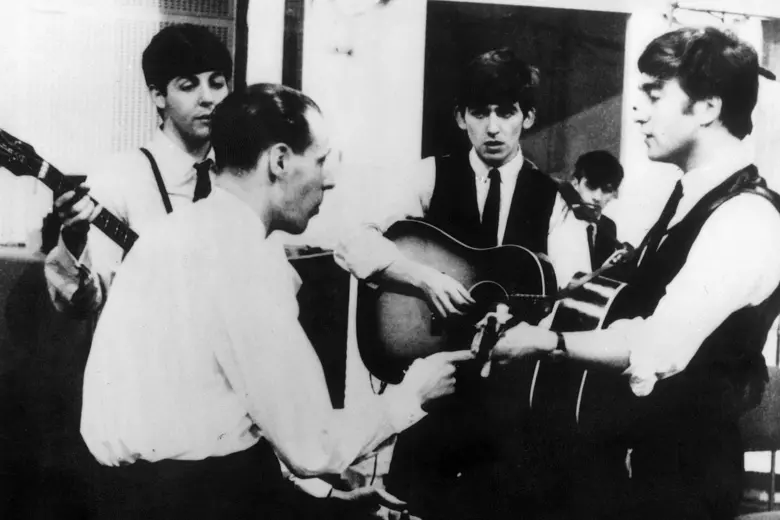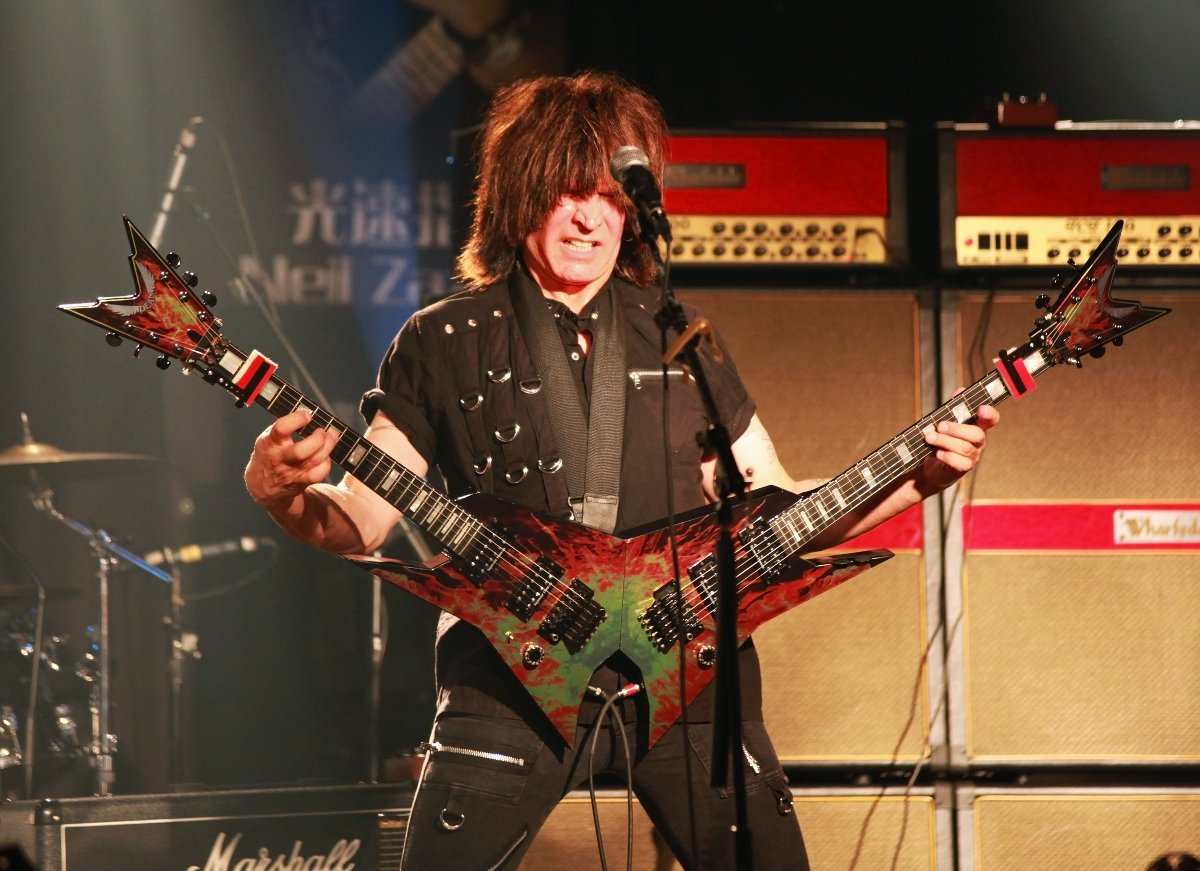The name blues modal harmony may confuse you at first but, have patience and let me explain a few things to help your guitar playing. You will have a greater appreciation for guitar music in general after reading this. When discussing which chords go together in which keys with students, I often have questions about why there are chords in some of their favourite songs (such as Major bVII and bIII chords) that don’t belong to the key of the song, yet the song is still classified as being in the key. Here is one approach I stumbled upon for looking at these variations in chord progressions, which I use to explain to my students.
Let’s Go
Above we have a diagram of a ‘harmonised blues scale’. Note that the pentatonic-based blues scale we guitarists all know and love is actually derived from this original form of the blues scale, which dates back to the influence on American Folk Music and Spirituals from African slaves in America. They took the standard I, IV and V7 harmony in a major key, and turned the I and IV chords into seventh chords, which were destabilised by the dissonant tritone interval formed by these new minor seventh note alterations in the I and IV chord. These newly-added notes added the bIII and bVII notes in the newly formed Blues Scale, a derivative of the major scale that the original Folk and Spiritual music was built from. This is an interesting history topic if you are keen to follow up on it.
The diagram shows blues-modal Chords that crept into popular music stemming from blues-based music. Before the 1960s most blues-based music followed the standard I-IV-V 12-bar blues chord progression, with a couple of variations on it here and there. This can be seen extensively in 1950s Rock ‘n’ Roll craze by artists such as Elvis, Chuck Berry, Little Richard, etc.
Don’t Get Blue
However, in the 1960s, there were further developments in harmony, influenced by groups such as The Rolling Stones, The Who, The Animals, etc. These new changes formed the harmonic foundations for later rock and metal bands. The new blues modal harmony was created when bands starting experimenting with more major chord possibilities than just the I-IV-V and stumbled upon bIII and bVII major chords, which was subsequently built out of the “Extended Blues Scale’” (above).
This was a pioneering shift in music that played a role in many bands and music to come. Early Blues Modal Harmony songs started experimenting with the bVII chord. Some key examples:
The Animals ‘I’m Cryin’‘, which uses I – bVII – I in the chorus and follows the standard I-IV-V 12-bar blues progression in the verse.
The Who’s ‘My Generation‘ uses I – bVII- I as its static harmony throughout.
Also, the Kinks’ ‘You Really Got Me‘ uses I – bVII – I. This song was later covered by Van Halen.
The bIII was also added and played a big role in harmony changes. It was linked to bVII chord changes as well. ‘Jumping Jack Flash‘ by the Rolling Stones was a good early example of this harmony. The first few bars have static Blues Modal Harmony I- bVII again with a tonic note root over both the chords.
I will leave you with a couple of examples from a book “How to write songs on Guitar” By Rikky Rooksby, that illustrates a couple of these types of blues-modal chord progressions and songs they are found in, a very good book if you looking into songwriting.
Blues Modal Theory Examples
The I-bVII/ C-Bb: is often an implied progression in riff-based songs like ‘Whole Lotta Love’, ‘My Generation’, ‘You Really Got Me’, ‘We Can Work It Out’ ‘The Rocker’ ‘Somebody’ and ‘Hong Kong Garden’.
I-bIII/ C-Eb: a classic hard-edged blues change: ‘Children Of The Revolution’ verse, ‘Can The Can’ chorus. Can also be exotic, as in the verse of ‘Head Over Heels’.
I bIII IV: C Eb F: ‘Magical Mystery Tour’, ‘Pride (In The Name Of Love)’ bridge and ‘Twenty-Five Miles’.
I bIII bVII: C Eb Bb: ‘The Rocker’ chorus and ‘Nutbush City Limits’ verse.
I bVII IV: C Bb F: ‘Desire’, ‘Won’t Get Fooled Again’ verse (and many other Who songs), ‘Crush With Eyeliner’ verse, ‘Addicted To Love’, ‘(This Could Be) The Last Time’, ‘Alright’ (Cast) verse, ‘You Ain’t Seen Nothing Yet’ (verse I, bVII, IV with a three-chord trick chorus I, V, IV), ‘Praise Him’, ‘Hand In My Pocket’ hook, ‘Can’t Get Enough’ verse, ‘Don’t Stop’ verse, ‘Cigarettes And Alcohol’ chorus, ‘With A Little Help From My Friends’ (Joe Cocker), ‘Gloria’ (Them) and ‘Chasing The Dream’ (as bVII-IV-I).
I bIII II I: C Eb Dm C: ‘Nobody’s Fault But My Own’ verse.
I bIII IV bIII: C Eb F Eb: ‘Far Gone And Out’ chorus.
I bIII bVII bIII: C Eb Bb Eb: ‘Doll Parts’ verse.
I III bVII IVmaj: Am C G D: ‘Wonderwall’ verse, ‘Run To You’ chorus.
I bVII IV V: C Bb F G: This is a popular sequence with a strong circularity. ‘Champagne Supernova’ chorus (with
IV as iIV), As I bVII V IV (C Bb G F) ‘Asking For It’ verse.
Conclusion
The list of songs that have the added Blues-Modal Harmony is truly endless, these are but a few. Most Blues Rock artists also have a wealth of compositions that aren’t 12-bar blues based, that revolve around these progressions. You can look into some of your favourite songs and see what harmony they comprise of to see if they fit the criteria.
If you wish to read more about this topic you can follow this link: click here, where I originally gathered much of the information and read more on the author’s information on Blues-Scale Modal Harmony.






Comments (0)